Zainab Masri| Amal Rantisi | Jana Issa | Hussam al-Mahmoud
“My life is all about debts. These debts I have accumulated to meet the mere basic daily needs of my family. I wish for any safe opportunity that would help me out of the country. I cannot think of any other solution but immigration to provide my family with a decent life.”
Thus opening up to Enab Baladi, rural Damascus-based taxi driver Muhammad recounted the multi-fold suffering of citizens in Syrian regime-held areas. He shed a sharp light on the ever-deteriorating living conditions he and fellow Syrians have to battle with as a result of the financial and economic policies set up by the government of the regime.
A few years ago, this driver had a comparably “better” life. He was capable of making-ends-meet without debts. Indeed, he used to budget his household expenditures in line with his income.
Like the larger percentage of the population in regime-held areas, for Muhammad doing financially better became synonymous with his ability to control expenses of basic necessities. This new definition of better became familiar after hikes in Syrian Pound (SYP) to US Dollar (USD) exchange rates and extreme shortage or total absence of a wide range of basic materials increasingly turned routine.
Having learned to cope with the regime government’s policies, citizens today predict a further decline in their living conditions and are preparing to design their finances, and lives, around the newest policy, or new-old policy, the price-wage increase measure. Under this scenario, the regime increases salaries and basic products’ prices simultaneously, however, effecting a disparity that citizens should figure a way out of on their own.
In this in-depth article, Enab Baladi discusses the reasons for price increases in regime-held areas, given the months-long unstable SYP to USD exchange rates. Furthermore, Enab Baladi talks with economists about the future of living conditions in these areas and the impacts of the regime government’s decisions, purportedly made to manage these conditions, on citizens’ lives.
Deficit and low demand control price ranges in Syria
Over the past few months, the regime government’s efforts in managing living crises were mostly hinged on unmediated and day-to-day assessment of subsidized goods and products in its areas. Accordingly, the government either increased the prices, or curtailed citizens’ shares, or removed such commodities from subsidies plans altogether.
Close to the regime, the al-Watan newspaper took the lead in justifying the government’s subsidies-based policies. The newspaper said the government is no longer capable of financing subsidized commodities because the “turbulence of the world’s markets has affected” the quantities of food available.
Later, Prime Minister of the regime government, Hussein Arnous, attributed what he called “setting prices of [bread and fuel] into motion” to reasons out of the government’s control. He said that the government had to do so to guarantee sustained supplies of the two commodities.
Arnous refuted that the price increase was intended to finance the government’s general budget.
Instead, he said, the increase is a means to “help lift some of the budget’s burdens,” after oil, once a chief budgetary supplement, started to weigh the budget down given that the government is now purchasing it with USD at a rate 75 percent higher than its value.
Arnous also refuted that recent price increases are an interlude to canceling subsidies out, adding that the subsidization policy is an essential element of Syria’s economic policies.
He reaffirmed that the government would not remove subsidies, but subsidization might change in form and structure.
Syrian economist and policy analyst, Karam Shaar, previously told Enab Baladi that the regime government is in a difficult financial situation and is incapable of importing goods the way it used to. He added that the government is hardly capable of spending.
Consequently, he stressed, the government is focused on spending on subsidies at the disadvantage of investment initiatives, which are almost non-existent.
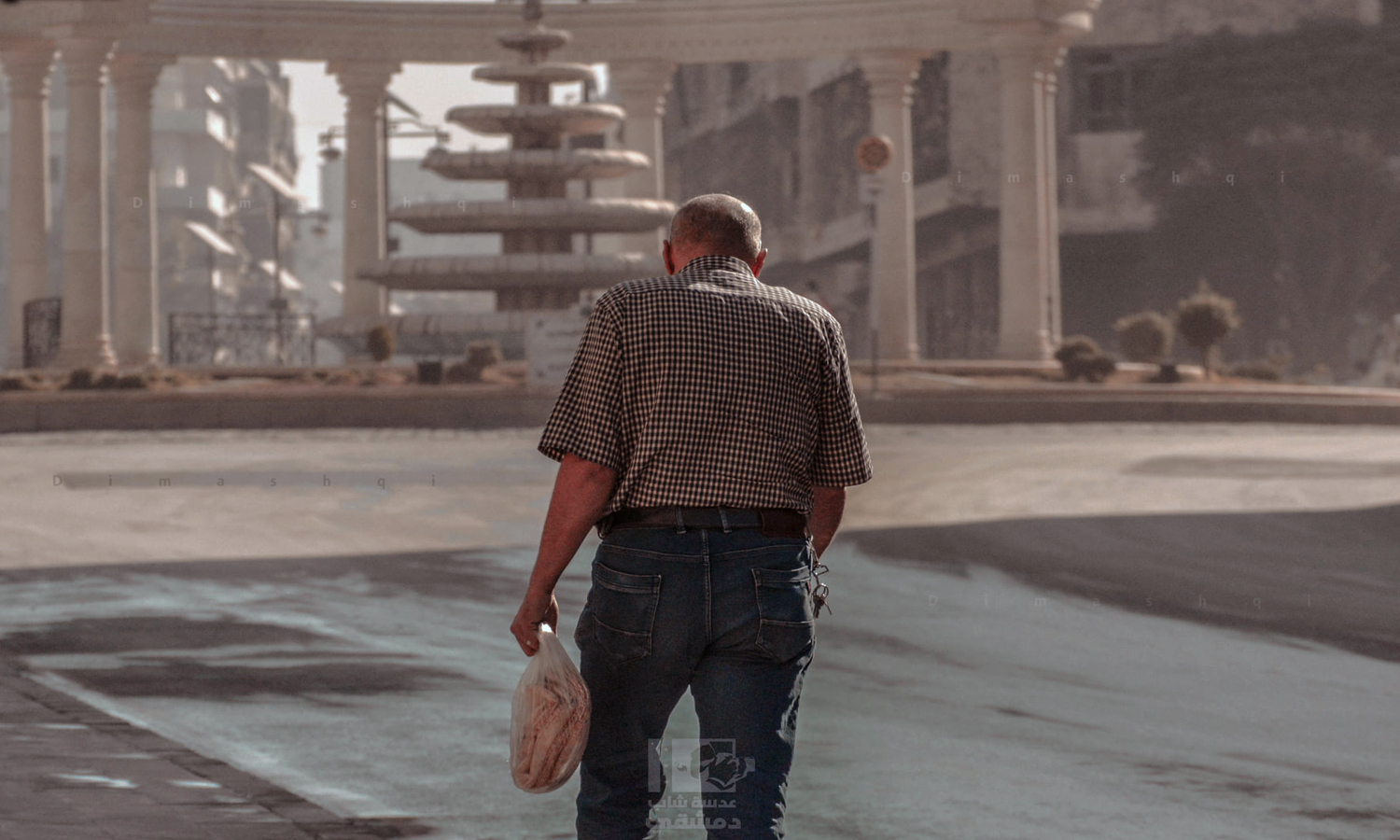
Syrian man carrying a bread bundle, walking across the Sabe’ Bahrat Square in Aleppo governorate — May 2021 (Lens Young Dimashqi)
The illusionist government
In July, the Syrian government increased the prices of food products and other daily commodities. The price increase was enforced despite the stability the SYP-USD exchange rate has been maintaining since April.
At the same time, the head of the regime, Bashar al-Assad, ratified a wage increase on 11 July at a rate of 50 percent for government employees’ salaries, and 40 percent for pensions.
Notably, the government adopts pretexts for price increases in keeping with the phase in the economic crisis it is presumably tackling. Before April, the government blamed price increases on the lows the SYP hit before the USD. Today, however, the government has shifted blame to high costs of production.
Economist and director of the Syrian Economic Taskforce, Dr. Aussama al-Qadi, told Enab Baladi that the great state of turmoil the Syrian economy is suffering and the grounds on which the regime is building its decisions are the outcomes of the regime’s mismanagement of the economic crises it is encountering.
Al-Qadi added that commodities’ prices are increasing because goods are scarce on the market, and also because the offer-demand curve has been affected by the worsening living conditions. Prices are also increasing under the influence of the regime’s ban on trading in foreign currencies, driven by the assumption that preventing USD transactions would stabilize commodities’ prices.
Even though the price increase was overreaching, the Arab Exporters Importers Union and the Union’s Syrian Regional Office have on 4 July signed a cooperation memorandum to “support and revitalize national exports,” regime-run Syrian Arab News Agency (SANA) reported.
The seize of exports has a direct impact on residents in regime-held areas. The scarcity of a commodity often leads to a hike in its prices.
In the aftermath of the March unprecedented food price hike, the Damascus-headquartered Consumer Protection Association demanded preventing food exports from regime-held areas. The association said that priority should be meeting the local market and the citizens’ needs.
Back then, the head of the association, Sarab Othman, said that the price increases are “maddening and unbearable,” noting that prices are hiking and shifting several times on the same day and that the majority of citizens is “barely left” any purchasing power, al-Watan newspaper reported.
Economist al-Qadi said that the Syrian government’s economic plans are basically about “drowning people in illusions.” On the one hand, the government declares a wage increase; on the other, it doubles the prices of basic commodities.
He added that wage increases are not solving the problem; rather, they are making it worse. These increases would naturally press the government to print new SYP notes while keeping the same scarce amount of commodities.
Consequently, the inflation levels will rise, sending goods’ prices skyrocketing in the future.
Over a single month: how did prices jump this high?
Over July, the USD hit an average of 3,200 SYP on the black market, according to Lira Today, a website that keeps a track of foreign currency exchange rates.
Officially, the SYP-USD exchange rate set up by the Syrian Central Bank (SCB) remained fixed since it was doubled last April, with a single USD exchanged for 2,512 SYP.
On 12 July, the regime government’s Ministry of Internal Trade and Consumer Protection increased the public transport fee to rates between 28.5 and 32 percent depending on the type of vehicle. This caused a transportation crisis across the majority of the Syrian governorates.
On 11 July, the regime government raised the price of a liter of fuel by 178 percent, nearly 500 SYP after it was 180 SYP, and the price of bread by 100 percent, turning the bundle’s price into 200 SYP after it was 100 SYP.
Furthermore, the Ministry of Internal Trade raised the price of Octane 95 fuel liter to 3000 SYP.
The fuel price increases were preceded by similar increases in rice and sugar prices by the Syrian Trading Establishment. One kilogram of rice or sugar is sold through the smart card system for 1000 SYP after it was sold for 600 SYP.
On 17 June, the regime government’s Ministry of Health raised the price of more than 11,000 medicine brands, by nearly 30 percent.
The UN had previously warned that prices in Syria continue to increase, threatening with high rates of hunger as a result of conflict, the COVID-19 outbreak and climate changes.
In a report published on 30 July, the UN’s Food and Agriculture Organization (FAO) and World Food Programme (WFP) warned that “conflict, the economic repercussions of COVID-19 and the climate crisis are expected to drive higher levels of acute food insecurity in 23 hunger hotspots over the next four months,” including Syria.
According to WFP’s figures, “[a] record number of Syrians are now food insecure, and 12.4 million people are now struggling to access a basic meal.
“This is almost 60% of the country’s population, and this has increased by a staggering 4.5 million people in the last year alone. An additional 1.8 million people are at risk of becoming food insecure unless urgent humanitarian action is taken,” the WFP revealed.
Regime using excuses as solutions for economic crises
The Syrian regime has taken to dealing with the simultaneous economic crises in its areas of control with ready-made excuses and prefabricated justifications, behind which stand the government’s inability to provide emergency solutions capable of pulling the country out of the quagmire of economic deterioration, which has been adversely affecting the living routines and conditions of citizens.
While Syrian citizens are grappling with soaring prices that government salaries fail to cover, the head of the regime, Bashar al-Assad, presented nothing new in his ingurgitation address on 17 July to the population in his control areas, who is on the brink of famine. Al-Assad merely re-emphasized the pretexts he had repeatedly used to blame for the collapsing economy.
Unidentified number of frozen billions
In the ingurgitation speech, delivered at the “People’s Palace” before members of the People’s Assembly, al-Assad presented new figures about the Syrian funds frozen in Lebanese banks. He said these assets remain unmoved due to the banking crisis that has been gripping Lebanon since late 2019.
Al-Assad opened the door for speculation as to the estimated sum of money frozen in Lebanon, hinting that “some say there are 40 such billion USD; others say there are 60 billion USD.”
However, those numbers that al-Assad mentioned in the form of hints are different from those he cited in his statement on a visit to the 2020 Producers Exhibition.
In this statement, he said that there is an estimated 20 and 40 billion USD frozen in Lebanese banks, baking these numbers with no official statistics as to explain the number gap.
The source that al-Assad, in both cases, used to validate these numbers was those he called “some.”
Furthermore, al-Assad linked the deteriorating economic situation in his areas of control with the Lebanese banks’ crisis, blaming the latter for Syria’s economic woes.
At the same time, he said that solving the economic crisis in Syria depends on the conditions in Lebanon.
Electricity is the villain
In addition to the fragile economy, Syrians are battling with poor water services in regime-controlled areas. Water shortages are the direct outcome of inoperable water networks and infrastructure, especially in the capital city Damascus and its countryside, as well as in the governorates of Hama, Homs and Tartous. The absence of water supplies has prompted people to purchase drinking water from water tankers.
Lacking water has pressed the Director of Planning in the Ministry of Water Resources in the regime’s government, Bassam Abu Harb, to declare on the local Sham FM radio station, that water rationing is not related to water resources, which he considered “a good thing,” but rather to power rationing.
Simultaneously, Abu Harb said that drinking water is scarce in Tartous suburbs because most of the water is being consumed by the agricultural sector.
He added that many projects were exempted from water rationing, noting that the water supply system in Damascus is simple, whereby water is secured through liquefaction and collection. However, he said, the difficulties encountered in Damascus’s suburbs are related to water pumping methods and the short pumping periods as a result of power rationing schemes.
In addition to lacking water, regime-controlled areas suffer from a brutal power rationing scheme. In some areas, power cuts continue for hours, which affected students and disrupted their education programs.
In Homs governorate, students of the University of Homs resorted to dormitories to survive the outages and pass this year’s exams.
Like the frozen funds, electricity was present in al-Assad’s inauguration speech. He said that the solution to power outages lies in investment in alternative energy, pointing out that support for this sector will be clear in policies and legislation. Nevertheless, he did not present a clear vision or a specific timetable that promises citizens within his areas of control a specific date for relaxing the tightening rationing hours.
Fuel from various sources
The fuel crisis tops all other calamities in regime-controlled areas. The core of the fuel deadlock is that the US-backed Syrian Democratic Forces (SDF) controls the key oil fields in northeastern Syria, including Rmelan and al-Shaddadi in al-Hasakah governorate, and the al-Omar and Tank fields in Deir Ezzor governorate.
Even though the SDF sells oil to several parties, including the regime’s government, the oil that the regime obtains from northeastern Syria has been barely enough to meet its needs.
The Syrian regime needs a daily 110,000 barrels of oil, 25,000 of which are obtained from the fields in the Syrian Badia (desert), in addition to over 20,000 barrels smuggled from the SDF-held areas with help from regime-affiliated businessmen, most notably Hossam al-Katerji. The rest the regime imports in ships from Iran, through the Suez Canal, directly to the Baniyas refinery.
In an interview with the state-run al-Ikhbariyah, on 18 March, the regime’s Minister of Oil, Bassam Tu’meh, said that the losses of the Syrian oil sector exceeded 92 billion USD.
The regime has attributed the fuel undersupply— which has been driving Syrians in regime-held areas to queue in front of fuel stations— to the delayed arrival of Iranian oil tankers. These tankers have been the subject of increasing controversy after a number were attacked in the Baniyas port and the ensuing exchanged accusations between Israel and Iran, with each holding the other responsible for the strikes on their commercial tankers.
In response to the urgent need that the continuous price hike could not curb, the regime has been turning a blind eye to almost daily fuel smuggling operations from Lebanon. These operations have been documented by Lebanese army reports.
Moreover, the regime last April established a Russian-Iranian-Syrian operations room to ensure a stable flow of oil supplies and some other materials such as wheat, the severe shortage of which prompted the regime government to curtail citizens’ bread allocations to one bundle every two days, delivered through the smart card system.
The consecutive economic challenges in regime-controlled areas reflect the fragility of the economic structure and the absence of government solutions. Soon after one crisis loosens, a second emerges, more severe and devastating for Syrians.
Commenting on this reality in his ingurgitation speech, al-Assad said that “what I am now saying does not mean that the situation is at all fine; I never said so. However, what I am saying is that the situation is not altogether impossible.”

A transportation crisis in the aftermath of the increased fuel prices in the capital city Damascus (AFP).
The economy, where to?
With the exacerbation of the economic and living crisis comes a package of government promises, as well as cliché justifications.
The government often promises it will control the spiraling conditions or it will achieve a more stable future that will improve the citizens’ economic and living standing.
Similarly, the economic or financial decisions taken by the regime and its head are accompanied by large-scale media coverage about the feasibility of these decisions and their ability to control the situation. One such coverage extensively addressed the new Consumer Protection Law passed last April.
Last April, al-Assad issued Legislative Decree No. 8 of 2021 that includes the new Consumer Protection Law, which consists of 83 articles regulating the sale, storage, quality of goods, as well as penalties, in addition to items regulating the work of consumer protection associations, and other general provisions.
Regime officials promoted the law’s benefits and goals, which stipulated fines and prison sentences for violators, ignoring the merchants’ demands that the regime repeals those penalties which they considered “supervising.”
For his part, Prime Minister, Hussein Arnous, said that this law “is established to protect the national industry by eradicating [from the markets products] of unknown origins or expired.”
However, the outcomes of the law’s application were not quite in line with the announced goals. The law failed to control prices while black market commerce remains rampant, which is corroborated by news pieces addressing the regime’s “supply control reports” that cover daily sales and purchases
Recently, Arnous promised that the next stage will witness successive “important” decisions that aim to revitalize production sectors and improve living conditions of the various segments of Syrian society, particularly state workers and later the unemployed as soon as conditions permit.
Political settlement is the solution
The Syrian economics researcher, Adham Qudaimati, said that the regime has no future economic alternatives other than increasing pressure on Syrian citizens, fighting them for their daily bread, in addition to canceling subsidies for foodstuffs or fuel.
This is because, Qudaimati added, the living conditions will ultimately crash under “floated” prices controlled by the supply and demand tool and whether supply and demand are available in markets. Namely, prices, at times, will be more expensive even than international prices, and the revenues of “war merchants and [regime] cronies” will come from the citizens’ pockets.
The living conditions in regime-held areas are heading towards a far worse version of the one Syrians are experiencing today, Qudaimati told Enab Baladi.
He added that there is no other solution to improve living conditions in Syria except through a political settlement in which al-Assad and his “war merchants” are not part of.
He added that the regime does not possess effective economic solutions and that it is relying on impoverishing Syrians in its areas of influence, by opting for methods and decisions that numb the citizen “who is under the regime’s oppression and the dominance of its security grip.”
Three scenarios await subsidies
In a report titled “Future of Government Support in Syria: Three Debated Scenarios,” published on 26 February 2021, the Conflict Research Program (CRP) discusses three potential scenarios as lying ahead of government assistance schemes.
Under the first scenario, the CRP posits that there would be “[a] continuation of the policy to control consumption and distribution of subsidised goods and services, such as the use of electronic cards [smart cards] granted to each household in an effort to restrict the distribution of certain goods. At the same time, raising the price of these goods remains a viable option to reduce the annually increasing subsidy bill, and investing a portion of the resulting savings to support state employees and retired personnel.”
Under the second scenario, the regime would opt for “[r]eplacing the subsidies with a cash allowance provided to each family. . . . ’shifting social support from in kind to cash support, be it through salaries and wages, bank accounts or electronic cards, and according to specific criteria that take into consideration development geography, economic activity and demographic indicators.’”
The report highlights the threats this scenario might pose, adding that “[w]hat is scary about this scenario is the risk that the government may remove cash allowances at any time, and that the value of these cash allowances may not be enough to keep up with rising inflation rates, which may accelerate with the price liberalisation of subsidised goods.”
The third scenario would manifest in “the shift of producer subsidies from input to output subsidies, as per quantitative and technical criteria that safeguard against waste and ensure that the aim of the subsidies is realised. For example, subsidising strategic crops as per the required quality and quantity.”
The report expands on the third scenario, adding that “[t]his method has been adopted by many countries. In the case of Syria, it can limit corruption and waste whilst encouraging the production of goods that the government wants to expand. However, this method requires a broad and accurate database, which is not currently available due to the presence of important agricultural areas outside of government control, the damaged infrastructure of state institutions in many regions, and defunct institutions due to war.”
Regardless of the scenario to prevail, Syrian citizens will fight the battle alone against the burdens of the collapsing economy in regime-held areas.
How do Syrians balance income and expenses?
Enab Baladi conducted an opinion poll on its social media platforms, asking the audience about their coping mechanisms and how they manage household budgeting. Nearly 600 users participated, demonstrating that varying numbers of Syrians have been depending on several sources of income to survive price hikes across the country.
The larger segment of the survey participants said they have diversified their sources of income to make ends meet, relying to a great extent on remittances sent by Syrians abroad. Others resorted to second jobs or even curtailed some of their daily essentials to reduce expenses.
In addition to the poll, Enab Baladi reached out to citizens in regime-held areas, including Damascus’ suburbs, Aleppo and Homs to shed light on the methods they adopt to fit their expenses into their modest incomes under current economic conditions. The surnames of interviewees were withheld to ensure their safety.
One job is not enough
Mahmoud— elementary school teacher From Homs
Mahmoud works as an accountant in a restaurant in addition to his stable job to supplement his salary of 60,000 SYP (18 USD).
Without that second job, which earns him a monthly 125,000 SYP, Mahmoud could not have managed the needs of his five-member family.
Selling possessions
Nawras—government employee from Homs
Nawras sold a plot of land he inherited from his father and a few pieces of jewelry his wife owned to buy a taxi to earn some extra money. Nawras failed to meet his six-member family depending only on the salary the government department he works for pays him, amounting to a meager 50,000 SYP (15 USD).
Nawras bribes the employee that oversees attendance to cover up for his delays. Nawras arrives at work at 10 a.m. and leaves at 12:30 p.m. before the end of the regular working hours. He drives his taxi until it is dark and still cannot fully make a living for his family.
Scrubbing essential nutrients from their diets
Subhiyeh—housewife from Aleppo
Subhiyeh, 43, scrubbed meat from many dishes she makes for her family, in addition to many other essential needs because goods are costly and she cannot afford them with the modest income she makes.
After her husband died four years ago and due to her tight finances, she started cleaning houses to make a living, adding her hard-earned money to the little sums her sons are paid, when they happen to find jobs. The money they all make is insufficient to cover their basic needs.
Searching for a third source of income
Abdulrahman— government employee from Aleppo
Because the salary he is paid fails to sustain him for a single week, Abdulrahman, 45, started working for a car wash from 5:00 p.m. to 1:00 a.m.
Some of his colleagues were dismissed by the government department they work for because they started asking clients for money to process their work. Having seen the mess his co-workers fell to, he preferred finding a second job.
Abdulrahman was coerced to take up that second job, despite the long working hours and the sleep deprivation he is suffering from, only to cover his children’s school expenses. Lately, the extreme price increases have made him look for a third job.
I only need the transportation fee
Maryam—university student from Damascus
A battle awaits Maryam every day, as she embarks on the journey from her home in Damascus’s countryside to the University of Damascus’ facilities.
She collects the transportation fee from whatever crumbs her mother can save from the household expenses.
Maryam said that being able to afford her transportation fee every day is like a dream coming true. The fee that haunts her depends on a variety of factors, such as the amount of money her Germany-based sister would manage to send them in that particular month and supervising payments, such as the fee of a doctor’s visit or maintenance of a broken home appliance.
Giving up on extra supplies
Intisar— housewife from Homs’ countryside
The financial standing of Intisar, 55, does not leave her much room to think of tomorrow. Therefore, she changed her shopping habits. Intisar today buys the materials she will use for that day’s meal only, for she can neither cook a meal that would nourish her family for days nor store supplies in the refrigerator, given the extensive power rationing— one hour of electricity in return for an 8-hour-outage.
Intisar said that her life is better than the lives of several of her relatives, for she lives at home only with her husband, helped by the money sent by her sons. Her sons’ aid does help her overcome many financial challenges, but it does not assuage the pain she feels for being away from her children, who left the country in pursuit of a better future.
if you think the article contain wrong information or you have additional details Send Correction
النسخة العربية من المقال
-
Follow us :












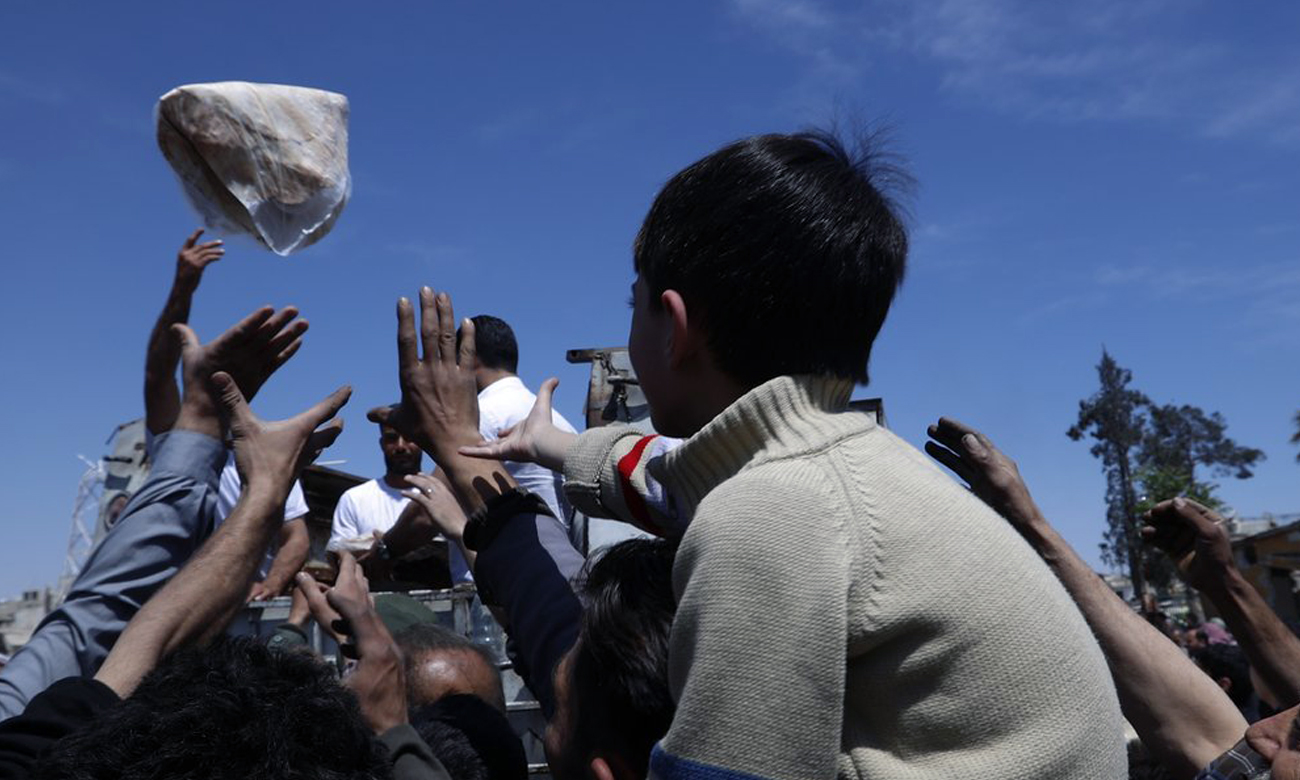
 Syrian child struggling to obtain a bread bundle in Syrian regime-held areas (AP)
Syrian child struggling to obtain a bread bundle in Syrian regime-held areas (AP)





 A
A
A
A
A
A

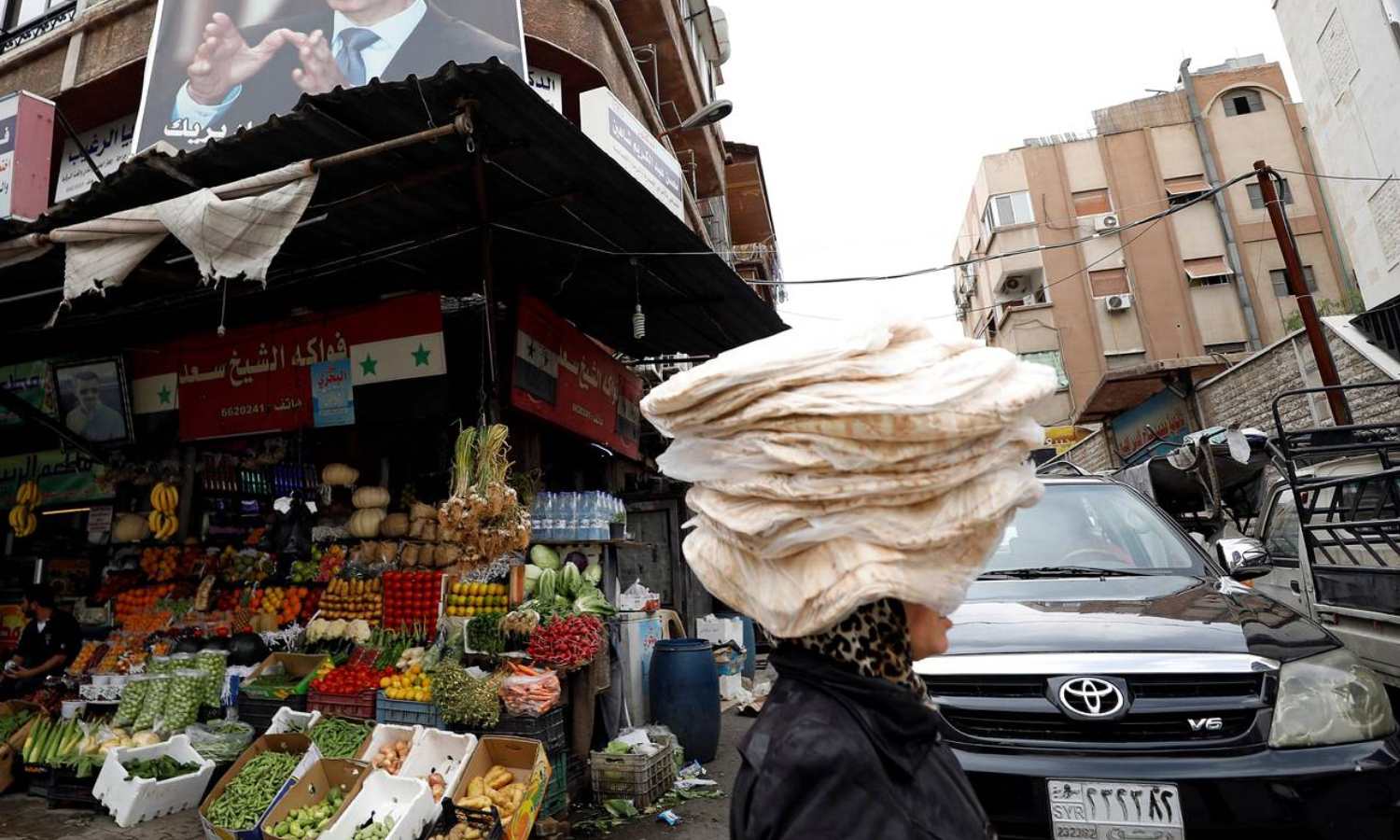

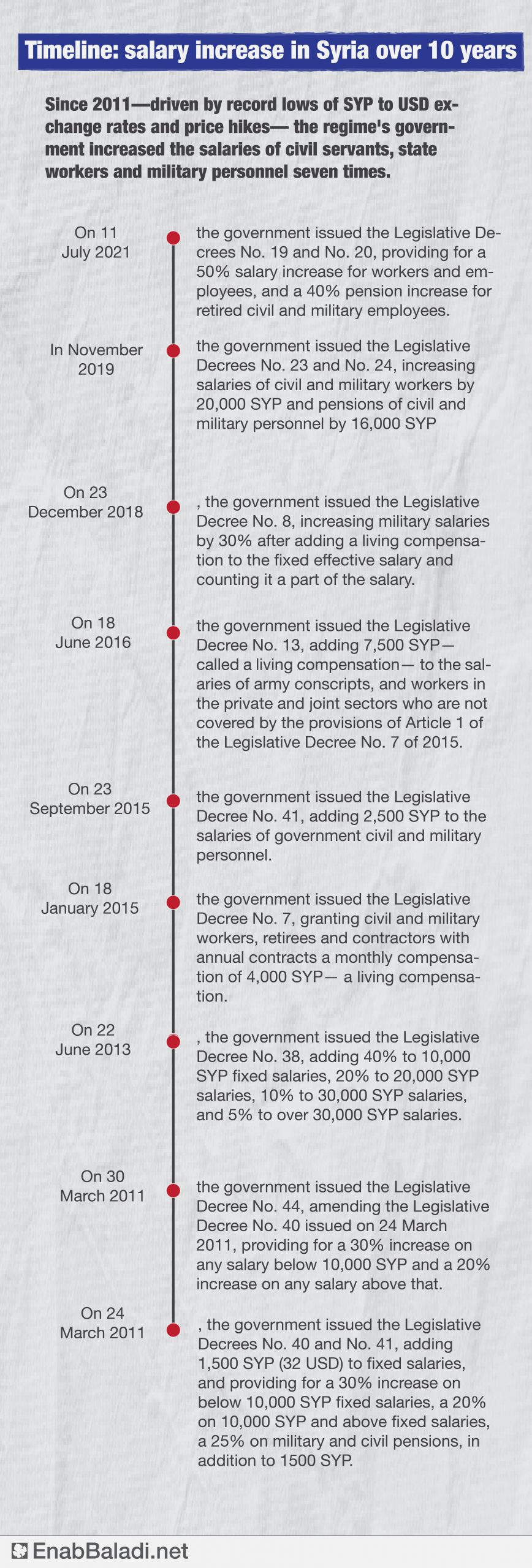



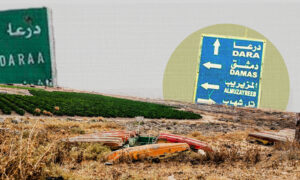


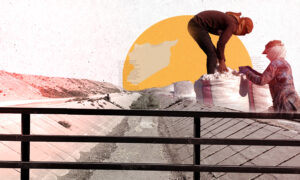
 More In-Depth
More In-Depth